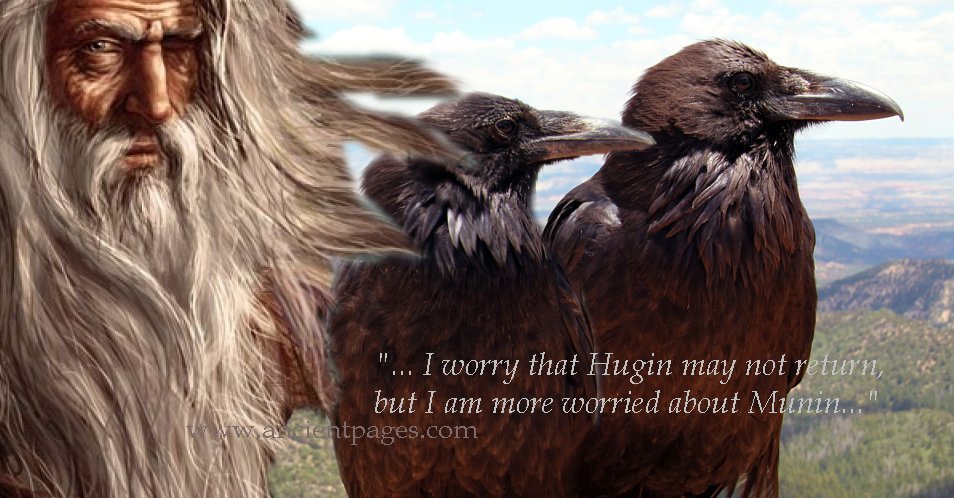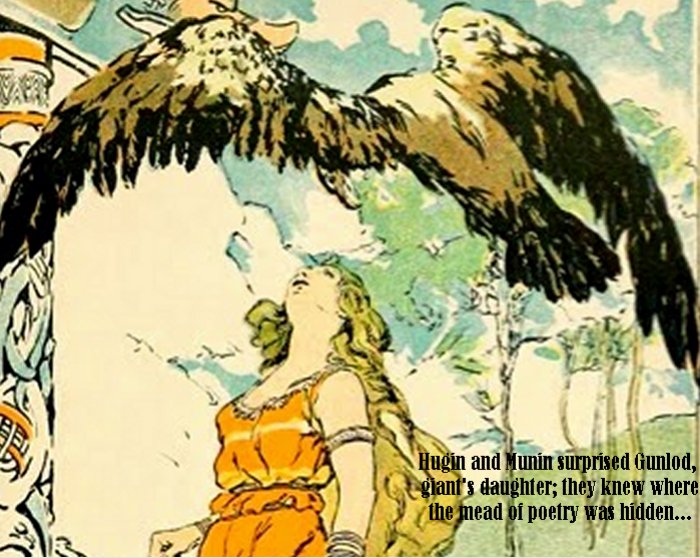Huginn and Muninn: Powerful Ravens Of Odin, Supreme God In Asgard In Norse Mythology
A. Sutherland - AncientPages.com - Among the Aesir gods in Norse mythology, the supreme god Odin is frequently depicted sitting on his high seat, Hlidskjalf, in Asgard, the home of the gods.
Odin always has his two raven companions, Hugin (Huginn) and Munin (Munnin), on his shoulders.
Hugin represents 'memory,' while Munin - represents 'thought.'
Hugin and Munin, "Thought" and "Memory," fly all over Earth each morning, returning with news, gossip, and secrets to whisper in his ear. Ravens are resolutely diurnal birds; however, a raven's cry at night signals the approach of the Wild Hunt.
Every day, Odin sends them out, and they fly across the world to seek important news and events. Odin surveys the worlds from Hlidskjalf and must-know reports of what is happening in all Nine Worlds.
In the evening, Hugin and Munin return to Odin's shoulders, and during dinner in Valhalla, they whisper all they have heard in his ears.
'Hrafnagaldur Odins' (Odin's Raven Chant), an obscure Icelandic poem in the style of the Poetic Edda, mentions that Odin is distraught one day. Idun, the wide of Bragi, god of music, poetry, and eloquence, has disappeared, and an untimely winter is coming from the north.
He sends his ravens to the underworld to investigate the disappearance of the goddess Idun. But the report of Hugin and Munin is enigmatic and unsatisfying.
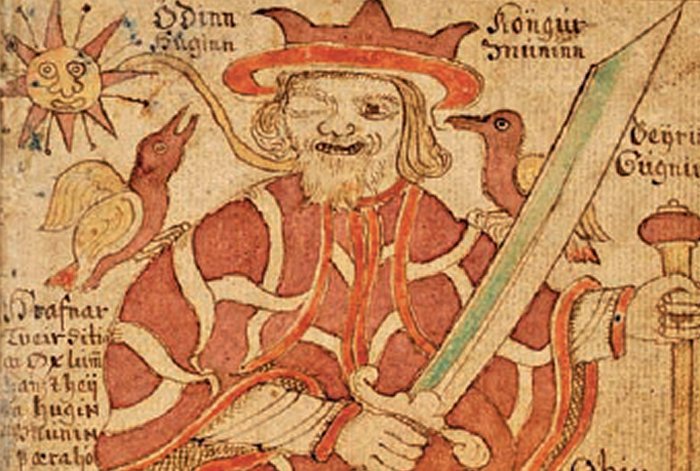 Image credit: Odin with his ravens Hugin and Munin. From the 18th-century Icelandic manuscript SÁM 66, in the care of the Árni Magnússon Institute in Iceland.
Image credit: Odin with his ravens Hugin and Munin. From the 18th-century Icelandic manuscript SÁM 66, in the care of the Árni Magnússon Institute in Iceland.
Ravens are traditionally mentioned in Norse and other mythologies. They are linked with battles and death, not only in poems but also in reality. They are scavengers usually found among the corpses on the battlefield in the aftermath of war. In Norse mythology, a raven plays a double role as a sign of evil or good.
But Hugin and Munin, whom we meet on Odin's shoulders, symbolize his power to see his mind and thoughts into the future. Additionally, as symbols of the battlefield, they represent god Odin's welcoming to Valhalla, the Hall of Odin, in which the warriors slaughtered in battle – the Einheriar – can enjoy a happy afterlife.
Hugin and Munin are not common ravens; they have special abilities. These birds have fantastic observation abilities and can understand and speak human language. They can fly very fast, visit the Nine Worlds in only one day, and come back just in time for Odin's dinner.
In one myth, giant Suttung entrusted the 'mead of poetry and inspiration' to Gunlod, his daughter, bidding her guard it night and day and allowing neither gods nor mortals to have so much as a taste.
To fulfill father's command, Gunlod carried the three vessels into the hollow mountain, where she carefully watched them. She was confident they were safe there, but she was wrong.
Gunlod did not suspect that Odin had discovered their place of concealment, thanks to the sharp eyes of his faithful ravens Hugin and Munin. The pair kept careful watch for possible danger or difficulties and observed everything that happened around them.
It would be unfair to say that Hugin and Munin are Odin's spies or servants; they are his wise advisers. Or perhaps they are a personification of the god Odin's intellectual powers or his 'fylgja' - animal spirits that accompany him for good or bad.
Every day, Odin was anxiously watching for their return at nightfall:
".... Hugin and Munin fly every day across the Gaping Ground.
I worry that Hugin may not return,
but I am more worried about Munin..." (Andy Orchard, The Elder Edda: A Book of Viking Lore 'The Lay of Grimnir")
Written by – A. Sutherland AncientPages.com Staff Writer
Updated on November 1, 2022
Copyright © AncientPages.com All rights reserved. This material may not be published, broadcast, rewritten or redistributed in whole or part without the express written permission of AncientPages.com
Expand for referencesReferences:
Neil Gaiman N. Norse Mythology
National museet.dk
Germanic Mythology
More From Ancient Pages
-
 Viking Age Mass Grave Reveals Gruesome Discovery At Historical Village Of Repton, England
Archaeology | Feb 4, 2018
Viking Age Mass Grave Reveals Gruesome Discovery At Historical Village Of Repton, England
Archaeology | Feb 4, 2018 -
 Sumerian King List – Ancient Record Of Kingship That Has Long Been Of Great Interest
Artifacts | Jan 22, 2016
Sumerian King List – Ancient Record Of Kingship That Has Long Been Of Great Interest
Artifacts | Jan 22, 2016 -
 Evidence Of Advanced Military Robots In The Ancient World – Unknown High-Tech Examined
Ancient Mysteries | Jan 13, 2021
Evidence Of Advanced Military Robots In The Ancient World – Unknown High-Tech Examined
Ancient Mysteries | Jan 13, 2021 -
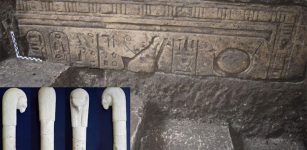 Ancient Tools Used In Religious Rituals In Honor Of Goddess Hathor Discovered In Egypt
Archaeology | Sep 27, 2021
Ancient Tools Used In Religious Rituals In Honor Of Goddess Hathor Discovered In Egypt
Archaeology | Sep 27, 2021 -
 Neanderthals Painted Andalusia’s Cueva de Ardales – New Study Confirms Their Cave Art
Archaeology | Aug 3, 2021
Neanderthals Painted Andalusia’s Cueva de Ardales – New Study Confirms Their Cave Art
Archaeology | Aug 3, 2021 -
 India’s Tradition Of Advanced Metallurgy, Craftsmen And Blacksmiths Is Longer Than Thought
Ancient Technology | Mar 19, 2019
India’s Tradition Of Advanced Metallurgy, Craftsmen And Blacksmiths Is Longer Than Thought
Ancient Technology | Mar 19, 2019 -
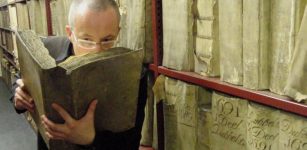 Odeuropa – Unusual Project Will Recreate The Smells Of Old Europe And Store The Scents In A Library
News | Nov 17, 2020
Odeuropa – Unusual Project Will Recreate The Smells Of Old Europe And Store The Scents In A Library
News | Nov 17, 2020 -
 Unique 3,000-Year-Old Logboat Found In River Tay – On Display In Perth, Scotland Again
Archaeology | Oct 30, 2023
Unique 3,000-Year-Old Logboat Found In River Tay – On Display In Perth, Scotland Again
Archaeology | Oct 30, 2023 -
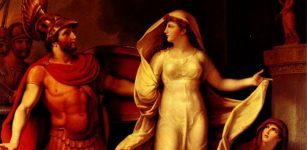 Tragic Tale Of The Cursed House Of Atreus
Featured Stories | Apr 12, 2021
Tragic Tale Of The Cursed House Of Atreus
Featured Stories | Apr 12, 2021 -
 2,000-Year-Old Stringed Instrument Found In Vietnam
Archaeology | Feb 22, 2023
2,000-Year-Old Stringed Instrument Found In Vietnam
Archaeology | Feb 22, 2023 -
 Ancient DNA Sheds New Light On The Link Between The European Huns And The Xiongnu Empire
DNA | Feb 26, 2025
Ancient DNA Sheds New Light On The Link Between The European Huns And The Xiongnu Empire
DNA | Feb 26, 2025 -
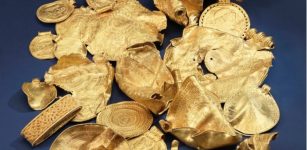 Vindelev Treasure – Surprising Evidence Of Nordic Connection With The European Iron Age Elite
Archaeology | Apr 9, 2024
Vindelev Treasure – Surprising Evidence Of Nordic Connection With The European Iron Age Elite
Archaeology | Apr 9, 2024 -
 Mystery Of Marquis of Haihun: 2,000-Year-Old Royal Coffin Opened In China
Archaeology | Apr 20, 2016
Mystery Of Marquis of Haihun: 2,000-Year-Old Royal Coffin Opened In China
Archaeology | Apr 20, 2016 -
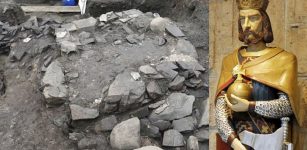 Is A Viking Settlement And An Even Older Church Hidden Under St. Clement’s Church In Norway?
Archaeology | Apr 13, 2017
Is A Viking Settlement And An Even Older Church Hidden Under St. Clement’s Church In Norway?
Archaeology | Apr 13, 2017 -
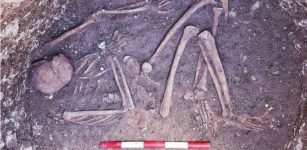 Rare Iron Age Crouch Burial Discovered At The Margate Caves Site In Kent, UK
Archaeology | Mar 8, 2018
Rare Iron Age Crouch Burial Discovered At The Margate Caves Site In Kent, UK
Archaeology | Mar 8, 2018 -
 Did Captain Robert Jenkins’ Ear Start A War That Lasted 9 Years?
Ancient History Facts | Jun 24, 2017
Did Captain Robert Jenkins’ Ear Start A War That Lasted 9 Years?
Ancient History Facts | Jun 24, 2017 -
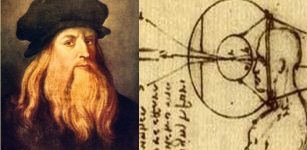 Did Leonardo Da Vinci Invent Contact Lenses In 1508?
Ancient Technology | Dec 10, 2015
Did Leonardo Da Vinci Invent Contact Lenses In 1508?
Ancient Technology | Dec 10, 2015 -
 Evidence Of Europe’s Earliest Human Presence, Dating Back 1. 3 Million Years Found At Venta Micena, Iberian Peninsula
Evolution | Jul 13, 2024
Evidence Of Europe’s Earliest Human Presence, Dating Back 1. 3 Million Years Found At Venta Micena, Iberian Peninsula
Evolution | Jul 13, 2024 -
 Mayan Underwater Tunnels With Bones Of Humans, Elephant-Like Creatures, Tigers, Bears, Tigers And Extinct Horses, Rediscovered In Yucatan
Archaeology | Jan 19, 2018
Mayan Underwater Tunnels With Bones Of Humans, Elephant-Like Creatures, Tigers, Bears, Tigers And Extinct Horses, Rediscovered In Yucatan
Archaeology | Jan 19, 2018 -
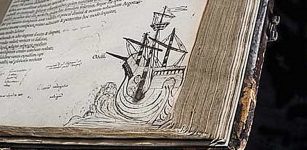 January 2016: Lost Library Of John Dee Revealed In A Special Exhibition
Archaeology | Jan 24, 2016
January 2016: Lost Library Of John Dee Revealed In A Special Exhibition
Archaeology | Jan 24, 2016

